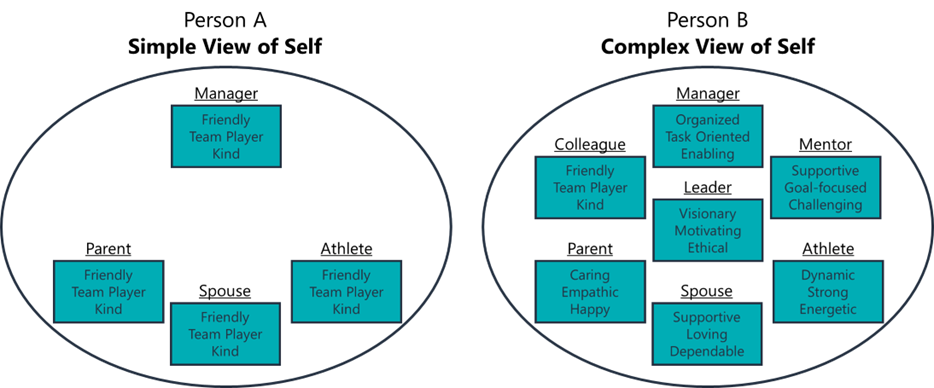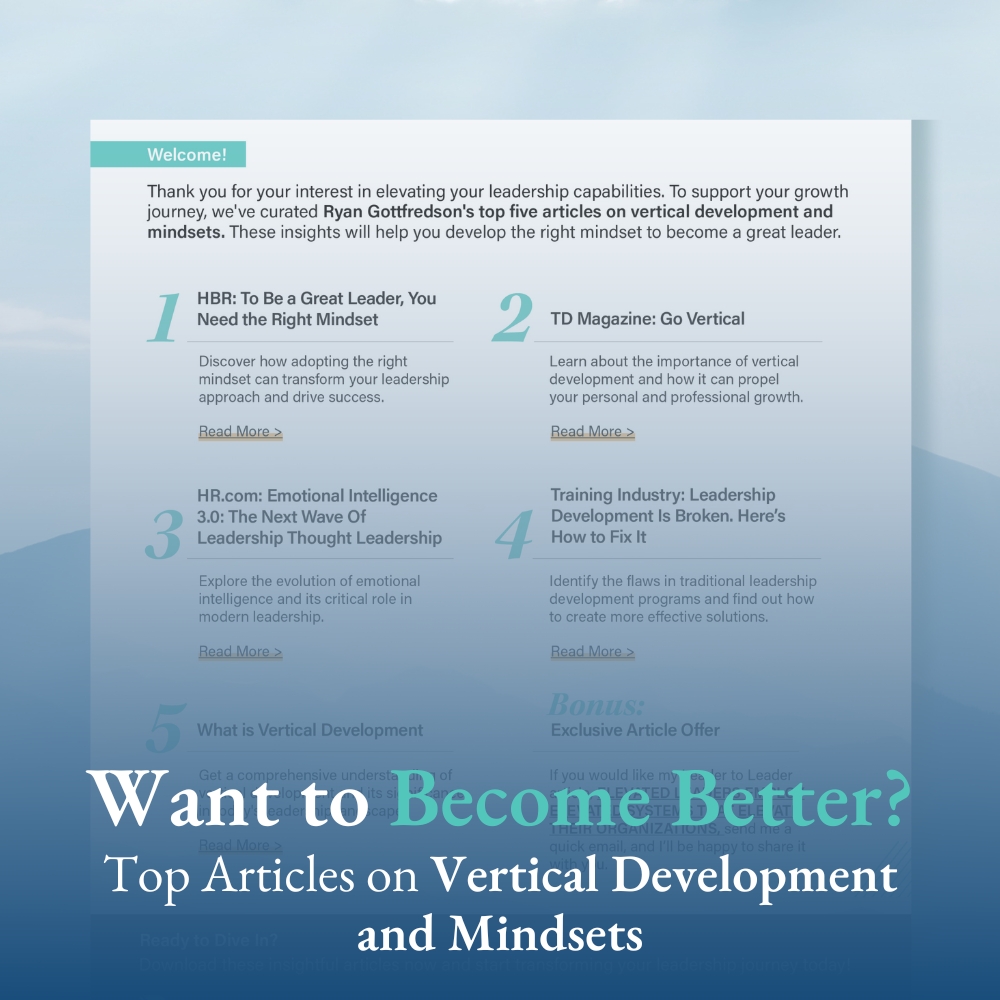In order for leaders to effectively navigate complex situations, they need to become complex beings.
In my academic research, I have come to learn that there are different forms of complexity. There is moral complexity, behavioral complexity, emotional complexity, and self-complexity.
I am in the middle of diving into these different forms of complexity. This week, I will focus on self-complexity.
Regardless of the form of complexity, what is important to note is that there is a reciprocal relationship between vertical development and complexity:
- As people become more complex, they become more vertically developed
- As people become more vertically developed, they become more complex
By identifying and understanding the different forms of complexity, we can evaluate just how complex we are across these different forms. And, if we find that we aren’t very complex with one form of complexity (at least not to the degree we would like to be), that now becomes an area to focus on for our continued vertical development.
Let me introduce you to self-complexity.
Self-Complexity
The basic premise of self-complexity is that just as you can line leaders up from shortest to tallest, you can line leaders up from the degree to which these individuals are simple to complex.
There are two ways to think about leader self-complexity, and both are important:
- One’s breadth of roles: Some leaders see themselves as being able to play more roles (complex), while other leaders see themselves as only being able to play are narrow set of roles (simple).
- One’s breadth of self-aspects: Some leaders see themselves as having a broader portfolio of attributes (e.g., humble, fierce, smart; complex), while other leaders see themselves as having a narrow portfolio of attributes (simple).
Why Self-Complexity is Important
Leaders generally operate in complex situations, where they have to navigate dynamic social systems and make decisions pertaining to erratic and changing internal and external environments.
If a leader approaches all of these situations in a similar way, it is likely that they will be successful with some, but surely not all situations.
For example, and this is a common issue I see with the executives that I work with: If a leader primarily operates in a task-oriented mode and they have trouble shifting out of this mode, then when they have a coworker who is grieving after the death of a loved one, they may not be able to access the needed emotional skills to be able to navigate that situation effectively.
In order for a leader to have a chance at being successful at navigating a wide variety of situations, they need to have the ability to tap into different aspects of themselves for the different situations they encounter. And, the broader the portfolio of aspects they can tap into, the more dynamic and effective they will be.
Another way to say this is, leaders need to have a requisite level of self-complexity in order to be effective leaders.
The Basic Premise of Self-Complexity
The basic premise of self-complexity is:

What Self-Complexity Looks Like
The figure below presents the difference between low self-complexity (i.e., simple view of self) and high self-complexity (i.e., complex view of self).
Leader 1 sees that they have four different identities, and they tend to pull upon the same attributes and strengths to fulfill their responsibilities for their different identities.
Leader 2 has seven different identities, and to fulfill their responsibilities for each identity, they pull from different attributes and strengths.

If we compare these two leaders, Leader 2 will be a much more adaptable, dynamic, and effective leader than Leader A.
The Benefits of Self-Complexity
Here is a summary of the benefits of operating at a high level of self-complexity:
- We are able to bring and tap into the most appropriate ensemble of attributes that our situations require
- We are able to process contextual information more thoroughly, which allows us to better activate the parts of ourselves that are best suited for our current context
- Greater well-being
- Greater ability to wade through stress
- Greater ability to effectively receive and respond to negative feedback
- Less likely to allow the negative cognitions and emotions from one aspect of oneself to spill over to other aspects of oneself
- Greater ability to function flexibly when faced with challenges
Implications for Leaders
I have already articulated that the greater a leader’s self-complexity, the more dynamic and effective they will be. But, let me attempt to bring this to life.
Imagine that we have two superintendents of construction sites who both encounter the threat of an employee walk-out.
A less complex leader (1) is less likely to comprehend the deep nature of the issues the employees are facing and (2) has a lesser repertoire of skills, modes, identities, and regulatory strategies. As a result, this less complex leader may respond with anger and aggression.
A more complex leader (1) is more likely to comprehend the deep nature of the issues the employees are facing and (2) has a greater repertoire of skills, modes, identities, and regulatory strategies. As a result, this more complex leader may be able to access the empathetic abilities and relational skills that will lead to information seeking and peaceful and effective negotiations. Yes, anger and aggression are in their repertoire, but maybe not deemed as being the most appropriate responses.
Improving our Self-Complexity
Neuroscientist have found that the brains of high self-complexity individuals have different neuronal patterns across the brain and operate at higher frequencies than the brains of low self-complexity individuals.
This is fascinating because it suggests that we can measure one’s level of self-complexity by looking at one’s brain.
But, this also suggests that if one wants to improve in their self-complexity, part of the process needs to involve training our brains. Literally, they need to modify the amplitude, frequency, and coherence of targeted neurophysiological dynamics of their brains in response to feedback stimuli.
And, this type of development effort has been used successfully in training elite athletes, concert musicians, and financial traders.
In fact, I am going to engage in such efforts in the near future by engaging in LENS (Low Energy Neurofeedback System) therapy as a way to improve my self-complexity. If you have any experience with this form of therapy, I would love to hear about it.











One Response